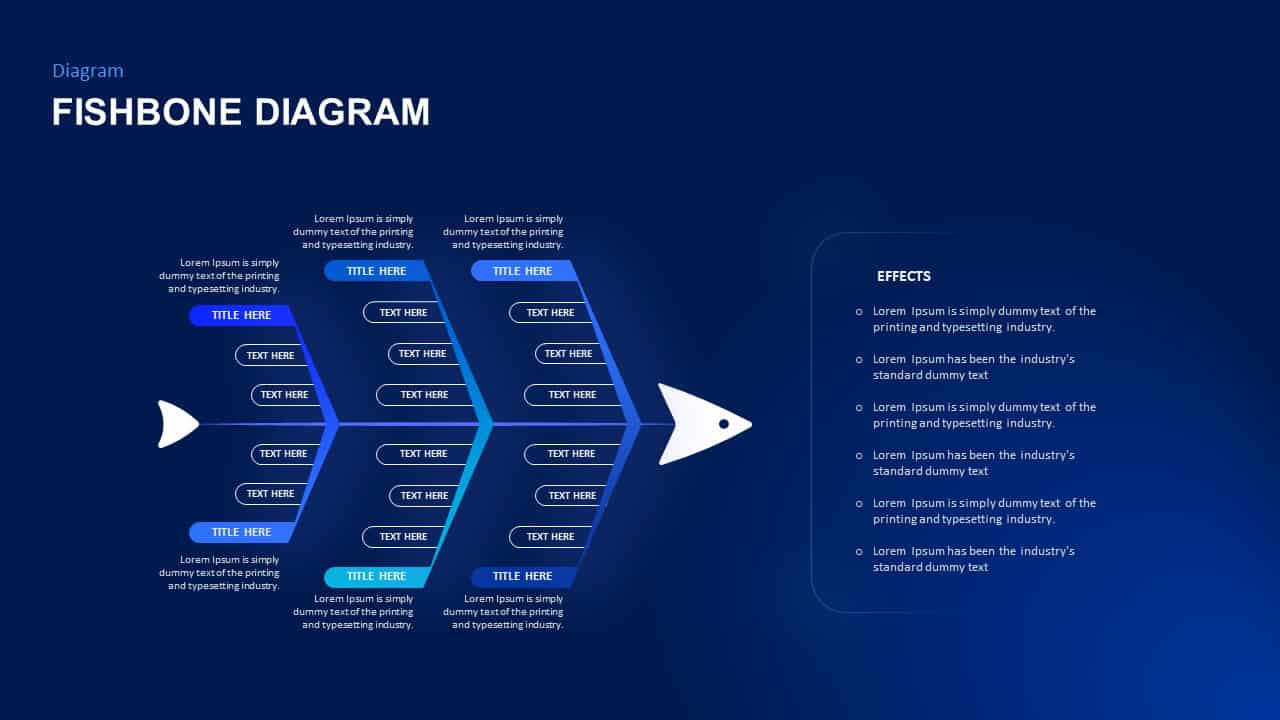fishbone diagram

Description
Elevate your root-cause investigations with this dynamic Fishbone Cause Analysis diagram template. Featuring a classic Ishikawa layout, the slide showcases three gradient-shaded backbone segments branching into labeled sub-causes, all converging on a bold arrow-head “effect” box. Crisp typography, vibrant blue-to-cyan gradations, and subtle drop shadows ensure each cause category and its four callouts stand out with clarity and visual hierarchy. The dark-mode background enhances contrast, making text and connectors pop on any screen.
Built on fully editable master slides, this template uses vector shapes and smart placeholders for seamless customization. Swap gradient fills to match corporate palettes, replace icons to suit specific problem domains, or relabel segments to reflect your organization’s terminology. Flexible text boxes and connector paths automatically realign as you add or remove sub-causes, minimizing manual adjustments. Linked data placeholders support live integration with Excel or Google Sheets, so you can present up-to-date failure rates, incident counts, or quality metrics directly within the diagram.
Optimized for both PowerPoint and Google Slides, the slide maintains full resolution clarity in webinars, boardroom presentations, and printable reports. Collaboration-friendly features—shared masters, version histories, and layout locking—help teams iterate without formatting errors. Use this visual asset to accelerate problem-solving workshops, quality-control reviews, compliance audits, or process-improvement sessions, transforming complex cause-and-effect relationships into a clear, actionable roadmap.
Who is it for
Quality managers, process engineers, project leads, and continuous-improvement professionals will benefit from this slide when conducting root-cause analyses, risk assessments, or corrective-action planning.
Other Uses
Repurpose this fishbone layout for risk-factor mapping, failure-mode analysis, product-development retrospectives, customer-experience diagnostics, or strategic brainstorming exercises.
Login to download this file

















































